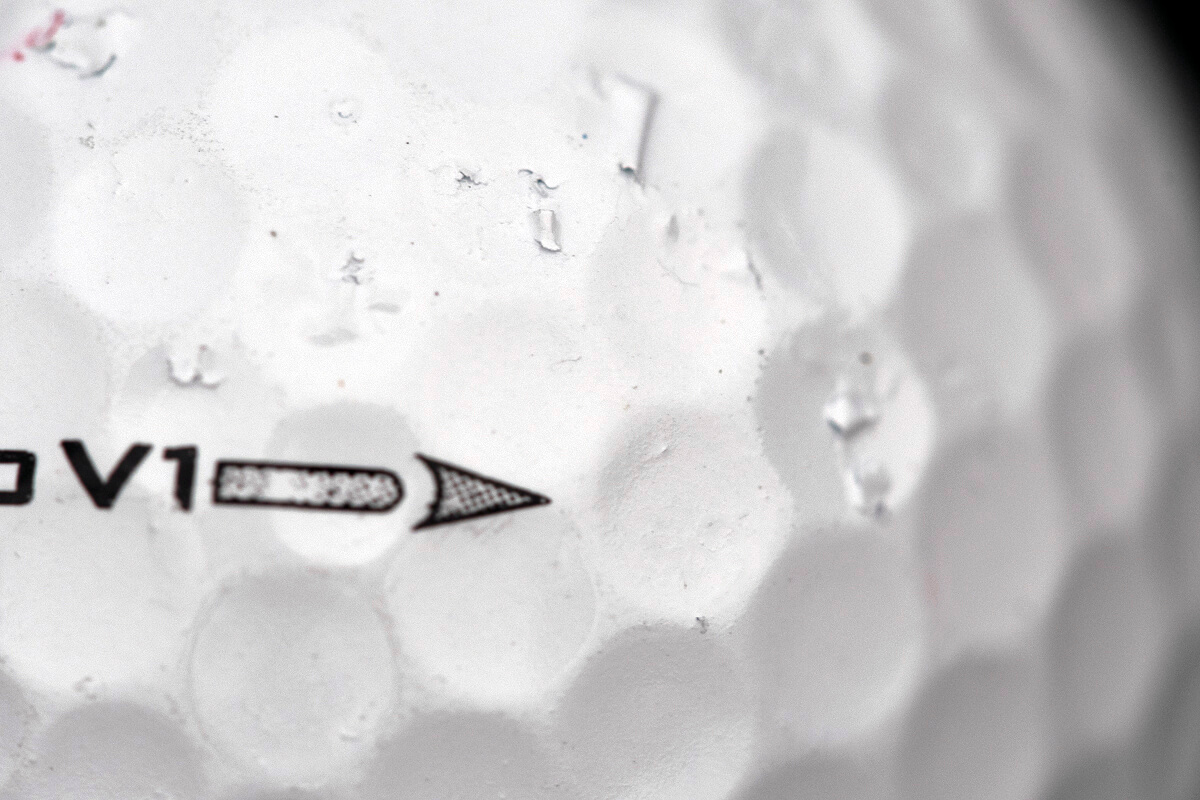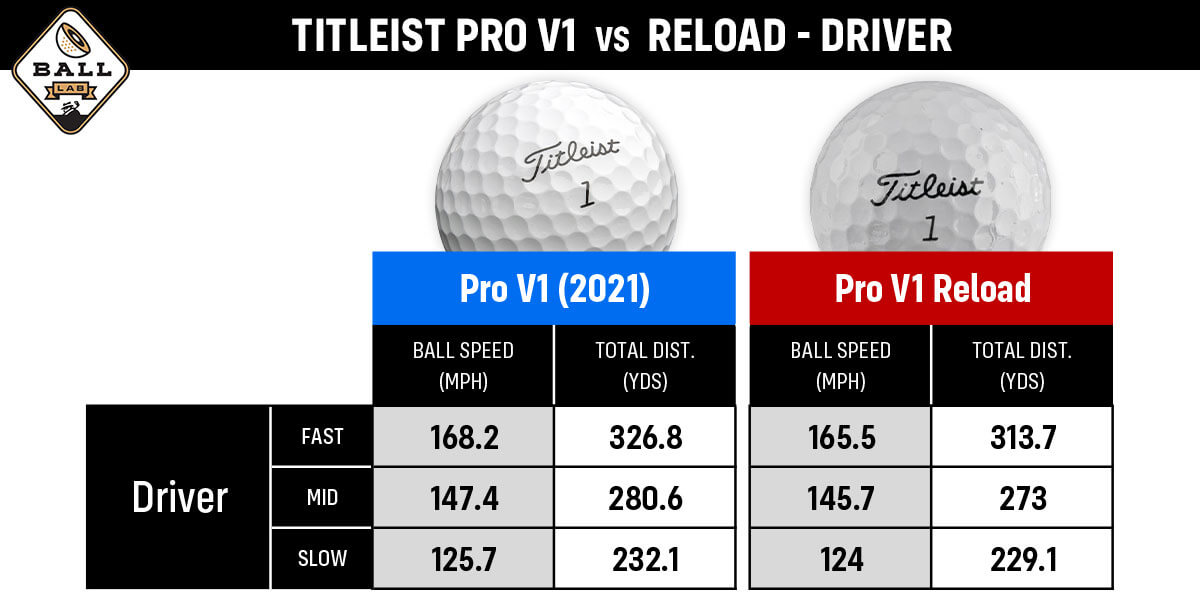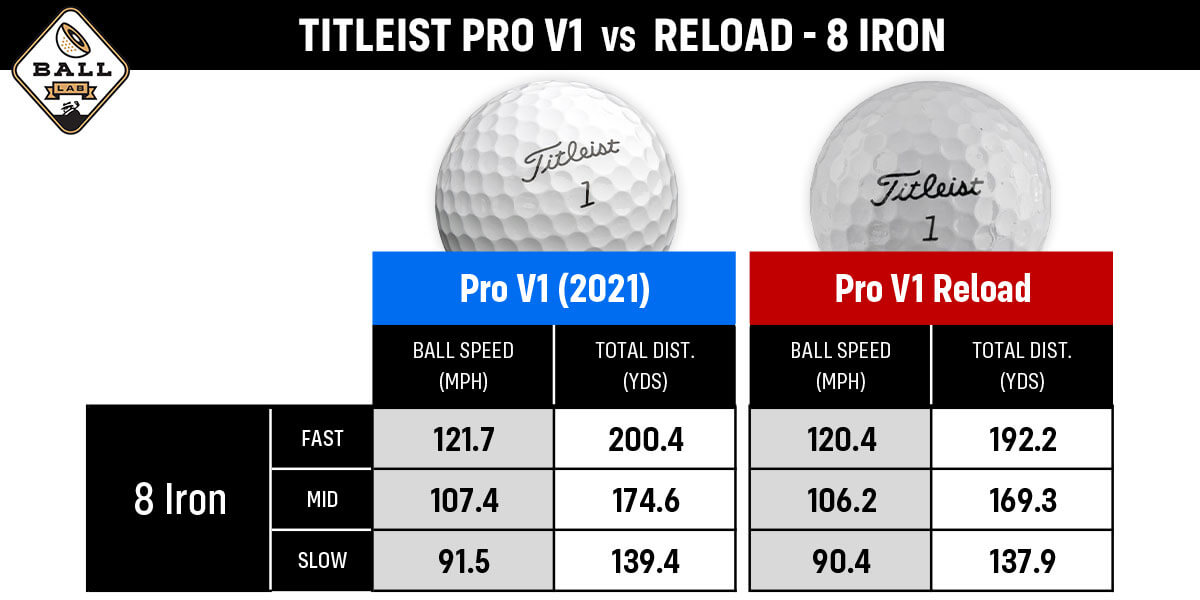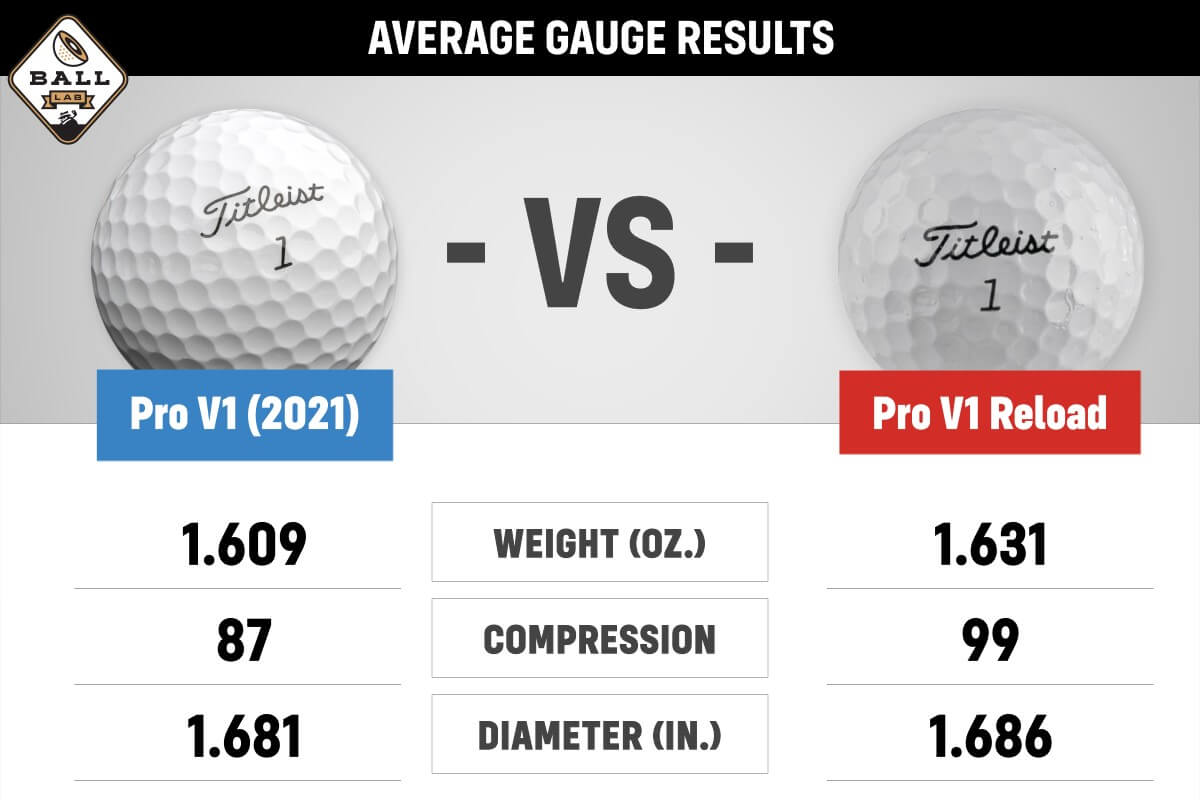As part of this year’s golf ball test, we included the popular Reload brand of refurbished golf balls. While we know many of you are more than willing to pay the full ride for a premium golf ball, we also know that our audience is rife with bargain hunters.
There’s no shame in trying to save a few bucks and, when it come to golf balls, if golfers are buying it—particularly if it has a urethane cover—we want to know how it performs.
To that end, the Reloads were treated like every other ball in our test. The robot hit the full complement of shots at all three swing speeds for driver and irons.
While the performance was eye-opening (and not in a good way), we also quickly realized that performance was only part of the story.
Here’s what we found.
Key Takeaways
Refinishing Quality Is Sketchy At Best
Whatever damage there happens to be on the ball—cuts, scrapes or gouges—gets painted over with little (or possibly zero) effort to clean things up. The refinishing process is a bit like painting over unsanded drywall and, in some cases, painting right over a hole in the wall.
Repainting Changes the Design of the Ball
It’s evident that the extra layers of paint added during the refinishing (reloading) process alter the geometry of the dimples. You can clearly see in the photo below that the mold marks on the refinished balls have almost vanished (in other samples they have vanished entirely). The result is dimples that are shallower with smoother edge radii. Ultimately, this means that even without cuts in the cover, the balls won’t fly as originally designed.

Reloads Are Like a Box of Chocolates …
The box says Pro V1 but beyond that, there’s not much in the way of specificity. Our boxes contained a mix of 2015 and 2017 Pro V1 side stamps. Even in perfect conditions, balls will change over time. Having two different models in a single box isn’t ideal and we’ve found even greater variation among other refinished brands. The bottom line here is that a box of refinished balls will often span multiple generations.
The Performance Ain’t What It Used To Be
It’s probably unrealistic to think that a refinished golf ball (especially one going on seven years old) is going to match the performance of the latest model. I mean, newer means better and longer right? Not always, of course, but what’s telling is the ball speed of the Reloads relative to their compression. Despite an average compression of nearly 100 (we’d expect that to be really fast off the driver), the Reloads were consistently one of the slowest (very often THE slowest) balls in the test across three different speeds for both driver and irons.
The Quality is Wildly Inconsistent
Again, it’s not a perfect comparison but, as you’ll see below, a box of poorly refinished golf balls doesn’t come close to matching the consistency of what you’ll get with new balls.
Reload Pro V1 — Performance
Comparing a new 2021 Pro V1 to what turned out to be two different generations of refinished Pro V1s, we expected the performance to be different. Just not that different.
It’s absolutely reasonable to expect changes in launch and spin. That’s especially true since Titleist swapped the profiles of the Pro V1 and Pro V1 a couple of generations ago but it’s certainly noteworthy that, across all speeds, iron shots hit with the Reload Pro V1s launched lower, flew lower and spun considerably more than the new balls.
Off the driver, the Reloads launched lower, flew lower but did spin a bit less. That’s something, I guess. Not much, but something.
The giant red flag here is the ball speed. As we’ve noted a time or two before, there is a near-absolute correlation between ball speed and compression. Regardless of anything else, we would expect the firmer ball to be the faster ball but that’s definitively not the case with the Reload Pro V1.
Despite an average compression of 99 (12 points firmer than the 2021 Pro V1), the Reload was slower across the board.
How slow?
Driver Speeds and Distance
At 115 mph driver speed, it was almost three mph slower than the 2021 ball. It was two mph slower at 100 mph driver speed, and 1.5 mph slower at 85.
It goes without saying that launch and spin contribute to the distance equation but the headline is that the Reload was 13 yards shorter at 115 mph, 7.5 yards shorter at 100 and six yards shorter at 85.
Iron Speeds and Distance
Looking at irons, where firmer balls can be a tick slower because you’re not interacting with the core as much, the Reloads were still slower than expected.
Reloads were 1.3 mph slower at 115 mph equivalent iron speeds, 1.2 mph slower at 100 mph equivalent and one mph slower at 85 mph equivalent. That results in distance deficits of seven, five and 1.5 yards respectively.
How much distance are you willing to give up to save a few bucks?
Ball Lab Gauge Data
If you’re not familiar with Ball Lab, all you need to know is it’s where we test the quality and consistency of golf balls. The summary version of what we found goes like this:
The refinished Reload Pro V1s were bigger, heavier, firmer and significantly less consistent than the 2021 Pro V1.
Let’s take a closer look.
Reloads Are Bigger
Our sample of 2021 Titleist Pro V1s had an average diameter of 1.6807 inches. It’s not a stretch to assume that Titleist’s target for Pro V1 diameter has always been damn near 1.68. That’s the USGA’s minimum allowable size and most manufacturers want their Tour balls to be as close to that number as possible.
By comparison, the Reload Pro V1s we tested had an average diameter of 1.686. It’s safe to assume that’s a bit larger than when they rolled of Titleist’s assembly line.
We’re dealing with small numbers here so I know it doesn’t look like much of a difference but it matters. The refinished process has increased the size of the ball (we probably could have guessed as much) but the important detail is that a bigger ball is typically a shorter ball. Our data shows that to be the case here.
The diameter of the Reload Pro V1 is much more in line with what we’d expect from two-piece and even some inexpensive urethane balls. As a consequence, the performance is as well.
Reloads Are Heavier
The average weight of the 2021 Pro V1 is 1.6091 ounces. That’s comfortably under the USGA limit of 1.62 ounces and it’s worth mentioning that none of the balls in our sample even flirted with the limit.
Conversely, the Reload Pro V1s have an average weight of 1.6301. In case it’s not clear, the average weight of the Reloads is solidly .01 ounces above the USGA limit. Again, we’re not talking about huge numbers but the key takeaway here is that 23 of the 24 Reloads we tested exceeded the USGA’s weight limit. It’s probably also worth mentioning that the one conforming ball was appreciably underweight.
There’s probably not much in the way of expectation that a refinished golf ball is going to conform to USGA rules. It’s not like they’re on the USGA conforming list and it makes sense that adding paint would add weight but still … 23 of 24 being over the weight limit came as a bit of surprise.
Reloads Are Firmer
The 2021 Pro V1 has an average compression of 87. The Reloads came in at 99. That’s two points firmer than the current Pro V1x.
What’s notable is that while compression across the 2021 sample doesn’t deviate much from the average, getting to the 99 average for the Reloads requires a significant spread. The softest ball in the sample measured 93 (not bad) while the firmest measured an astounding 126. Other than an old Top Flite XL3000 that measured 135 or so, that 126 is the firmest ball we’ve measured to date.
Reloads Are Less Consistent
The compression spread gives a hint of the general inconsistency of the Reloads. To hammer the point home, I could throw some standard deviations at you but it’s probably easier if I tell you that the Reload sample was so inconsistent that it would qualify as Poor for every metric we test. In fact, it would actually redefine the standard for Poor. The Reload is so bad that its existence in the database would make every other ball better.
Here’s the ball-by-ball comparison alongside the 2021 ball. Note: We’ve had to adjust the scale of our charts to account for the Reload. That detail alone is probably reason enough not to buy.
The Takeaway
If you take one thing away from this article, let it be this:
Don’t buy recycled, refinished or Reload(ed) golf balls.
While we’re optimistic that some refinishing houses yield a better product than Reload, the likelihood is that refinished balls will always be your worst option for saving a few bucks on golf balls.
I could point out that if you’re only buying six dozen boxes a year, the dollar savings from buying refinished over new isn’t massive. That said, I understand that there are reasons why golfers want to spend less and, given that you’re not likely to find any “buy-3-get-1-free” deals right now, top-tier direct-to-consumer brands are definitely worth considering.
If your only objective is to spend the least amount of money possible, you’re probably better off buying Kirklands or premium-grade used balls from a reputable source (like lostgolfballs.com) instead of refinished.
In the case of the latter, we’re often talking about one-hit wonders and logo overruns that often cost even less than refinished balls. You’re probably not going to get the consistency that you’d get buying new but it’s probably true that golfers are losing more balls than ever so you’ll likely have nearly as many options. You’ll also know exactly what you’re getting and, quite frankly, there’s little chance you could do worse than refinished.
























Brad
4 months ago
But, but, but I have a magnetic pond in my backyard (gravity). If I ever get motivated to dredge it, please shoot me.